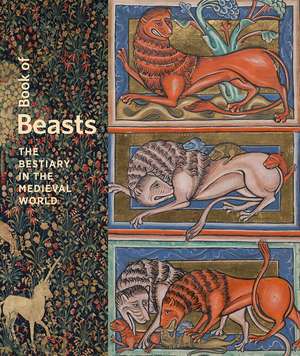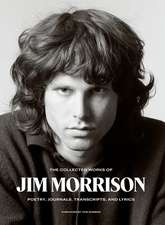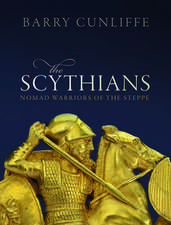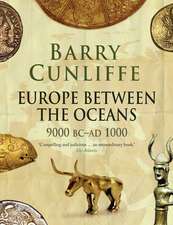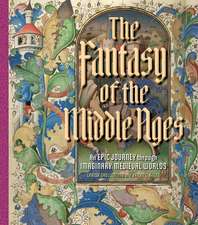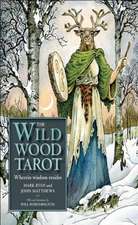Book of Beasts: The Bestiary in the Medieval World
Editat de Elizabeth Morrison Contribuţii de Larisa Grollemonden Limba Engleză Hardback – 4 iun 2019
A celebration of the visual contributions of the bestiary—one of the most popular types of illuminated books during the Middle Ages—and an exploration of its lasting legacy.
Brimming with lively animals both real and fantastic, the bestiary was one of the great illuminated manuscript traditions of the Middle Ages. Encompassing imaginary creatures such as the unicorn, siren, and griffin; exotic beasts including the tiger, elephant, and ape; as well as animals native to Europe like the beaver, dog, and hedgehog, the bestiary is a vibrant testimony to the medieval understanding of animals and their role in the world. So iconic were the stories and images of the bestiary that its beasts essentially escaped from the pages, appearing in a wide variety of manuscripts and other objects, including tapestries, ivories, metalwork, and sculpture.
With over 270 color illustrations and contributions by twenty-five leading scholars, this gorgeous volume explores the bestiary and its widespread influence on medieval art and culture as well as on modern and contemporary artists like Pablo Picasso and Damien Hirst.
Brimming with lively animals both real and fantastic, the bestiary was one of the great illuminated manuscript traditions of the Middle Ages. Encompassing imaginary creatures such as the unicorn, siren, and griffin; exotic beasts including the tiger, elephant, and ape; as well as animals native to Europe like the beaver, dog, and hedgehog, the bestiary is a vibrant testimony to the medieval understanding of animals and their role in the world. So iconic were the stories and images of the bestiary that its beasts essentially escaped from the pages, appearing in a wide variety of manuscripts and other objects, including tapestries, ivories, metalwork, and sculpture.
With over 270 color illustrations and contributions by twenty-five leading scholars, this gorgeous volume explores the bestiary and its widespread influence on medieval art and culture as well as on modern and contemporary artists like Pablo Picasso and Damien Hirst.
Preț: 406.47 lei
Nou
Puncte Express: 610
Preț estimativ în valută:
77.79€ • 84.47$ • 65.34£
77.79€ • 84.47$ • 65.34£
Carte disponibilă
Livrare economică 01-15 aprilie
Livrare express 15-21 martie pentru 104.14 lei
Preluare comenzi: 021 569.72.76
Specificații
ISBN-13: 9781606065907
ISBN-10: 1606065904
Pagini: 354
Ilustrații: 281 color illustrations
Dimensiuni: 241 x 292 x 41 mm
Greutate: 2.31 kg
Ediția:1
Editura: Getty Publications
Colecția J. Paul Getty Museum
ISBN-10: 1606065904
Pagini: 354
Ilustrații: 281 color illustrations
Dimensiuni: 241 x 292 x 41 mm
Greutate: 2.31 kg
Ediția:1
Editura: Getty Publications
Colecția J. Paul Getty Museum
Recenzii
Winner of 2020 PROSE Award, Art Exhibitions
“Sumptuous. . . . Exquisite. . . . A provocative introduction to aspects of medieval European culture for discerning readers interested in the premodern past.”
—Scott Robinson, The Medieval Review
“A unicorn of a book: an anthology with a strong argument; an exhibition catalogue that is a work of serious scholarship; an accessible introduction to a subject that can seem arcane and remote from modern sensibilities; and a beautifully designed object in its own right. Anyone who wants to make sense of the fascinating, complex, and influential medieval bestiary should start here.”
—Sherry C.M. Lindquist, Speculum
“Sumptuous. . . . Exquisite. . . . A provocative introduction to aspects of medieval European culture for discerning readers interested in the premodern past.”
—Scott Robinson, The Medieval Review
“A unicorn of a book: an anthology with a strong argument; an exhibition catalogue that is a work of serious scholarship; an accessible introduction to a subject that can seem arcane and remote from modern sensibilities; and a beautifully designed object in its own right. Anyone who wants to make sense of the fascinating, complex, and influential medieval bestiary should start here.”
—Sherry C.M. Lindquist, Speculum
“This volume would make a good addition for students of medieval art, calligraphers, illuminators, artists, art lovers, and students of ecclesiastical Latin and Greek. It is written in a meticulous and scholarly style, but as a layperson I had no problems understanding and learning from the included essays.”
“Like the manuscripts it considers, the book is a feast for the eye and a breath-taking cache of knowledge, which offers a much-needed balance to pre-existing scholarship on the bestiary’s textual history.”
“Beautiful.”
“The catalogue is a grand affair, with large pin-sharp illustrations, thorough data, bibliography and index. Care has been taken to balance scholarship with approachable text for the engaged non-specialist reader.”
“A remarkable book of art.”
“The volume is much more than a catalogue: it serves as an excellent introduction to the lore and images of beasts in medieval culture. . . . Including four appendixes that will have great value for scholars, this beautifully produced book is accessible to nonspecialists, who will find it sometimes strange and uniformly delightful reading.”
“Book of Beasts is exceptional in that it can be enjoyed as a sumptuously illustrated coffee-table book, but also constitutes a valuable point of reference, and springboard for future research, for professional medievalists and for academics with an interest in ‘the animal turn’.”
“Like the exhibition, the catalog is a grand assemblage: hundreds of dazzling illustrations accompany articles by scholars of art, medieval studies, and history to illumine the medieval bestiary and its reception. . . . Beautifully illustrated, meticulously edited, thought-provoking for scholars and animal enthusiasts alike, the catalog reminds us that, like the opulent bestiaries, our fellow creatures are fragile, irreplaceable, and endlessly enchanting.”
“Beautifully illustrated. . . . This book conjoins an exhibition catalogue, geared to an educated but non-professional audience, with academic studies for specialists who are familiar with the material and can digest overloads of information. As a comprehensive compilation it will provide interest and inspiration to both types of readers.”
Notă biografică
Elizabeth Morrison is senior curator of manuscripts at the J. Paul Getty Museum. She is co-author of The Book of Marvels (Getty, 2024) and editor of A Knight for the Ages: Jacques de Lalaing and the Art of Chivalry (Getty, 2018).
Larisa Grollemond is assistant curator of manuscripts at the J. Paul Getty Museum and was coauthor of The Fantasy of the Middle Ages (Getty Publications, 2022).
Larisa Grollemond is assistant curator of manuscripts at the J. Paul Getty Museum and was coauthor of The Fantasy of the Middle Ages (Getty Publications, 2022).
Descriere
A celebration of the visual contributions of the bestiary—one of the most popular types of illuminated books during the Middle Ages—and an exploration of its lasting legacy.
